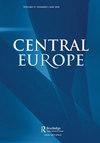Introduction: The Jewish Body
IF 0.1
2区 历史学
Q2 HISTORY
引用次数: 1
Abstract
The Jewish body has long caught the interest of historians and anthropologists. For both Jews and non-Jews, the body of the Jew had features which distinguished it essentially from a non-Jewish body, similar to the way a male body is conceived of as essentially different from a female body. Often, these bodily features were imagined as unchangeable. The following set of articles aims to contribute to scholarship compiled since the 1980s on the history of the body, according to which the body is not understood as a biological and invariable constant but rather as a social construction, formed through discourse, and changing over time. The perception of the body depends on both the one who inhabits the body and the outside observer, who sees and perceives the body of the other according to his/her own ideas and perceptions. Thus, we look at an imagined body, which we only get to know through descriptions that are deeply influenced by the observer’s cultural concepts and ideas. The ways contemporaries wrote, spoke, or thought about the body – their own and that of the other – formed and altered this very body. The articles in this volume aim at deconstructing the discourses which contributed to shaping the Jewish body. The following example illustrates how central the question of the body and its features could be. The early modern Frankfurt ‘ethnographer’ of the Jews, Johann Jacob Schudt (1664–1722) had no doubt that ‘one could identify a Jew immediately among many thousands of people.’He argued that it was easy to recognize a Jew, even when he tried to hide his identity. Outward signs ‘partly physical, partly in relation to his mind, partly in his lifestyle’ could easily reveal his Jewishness. Moreover, he claimed that distinguishing features of the Jew included the nose, lips, eyes and ‘the whole body-posture’. Jews and non-Jews had a long tradition of discussing and ruminating about such an imagined Jewish body, and they also marked the Jewish body to make it recognizable. The question of distinguishability and the markers of difference were among the core issues in JewishChristian relations and were often directly related to the (Jewish) body and included the question whether a conversion could turn a Jew into a Christian or some inherent and引言:《犹太人的身体
长期以来,历史学家和人类学家一直对犹太人的身体感兴趣。无论是犹太人还是非犹太人,犹太人的身体都有一些特征,这些特征本质上区别于非犹太人的身体,就像男性的身体被认为与女性的身体有本质上的区别一样。通常,这些身体特征被认为是不可改变的。以下这组文章旨在为20世纪80年代以来编纂的关于身体历史的学术研究做出贡献,根据这些研究,身体不是被理解为一个生物的、不变的常量,而是被理解为一种社会结构,通过话语形成,并随着时间而变化。对身体的感知既取决于居住在身体内的人,也取决于外部观察者,后者根据自己的想法和感知来观察和感知他人的身体。因此,我们看到的是一个想象中的身体,我们只有通过描述才能了解它,而这些描述深受观察者的文化观念和思想的影响。同时代人书写、说话或思考身体的方式——他们自己的或他人的——形成并改变了这个身体。本卷中的文章旨在解构有助于塑造犹太人身体的话语。下面的例子说明了身体及其特征的问题是多么的重要。早期现代法兰克福犹太人“民族志学家”约翰·雅各布·舒特(1664-1722)毫不怀疑,“一个人可以在成千上万的人中立即识别出一个犹太人。”他认为犹太人很容易被认出来,即使他试图隐藏自己的身份。外在的迹象“部分是身体上的,部分是他的思想上的,部分是他的生活方式上的”可以很容易地揭示他是犹太人。此外,他还声称,犹太人的特征包括鼻子、嘴唇、眼睛和“全身姿势”。犹太人和非犹太人长期以来都有讨论和思考这种想象中的犹太人身体的传统,他们也在犹太人的身体上做了标记,使其可识别。可区别性问题和差异标记是犹太-基督教关系中的核心问题之一,通常与(犹太人)身体直接相关,包括皈依是否会使犹太人成为基督徒或某些固有的问题
本文章由计算机程序翻译,如有差异,请以英文原文为准。
求助全文
约1分钟内获得全文
求助全文
来源期刊

Central Europe
HISTORY-
CiteScore
0.20
自引率
0.00%
发文量
7
期刊介绍:
Central Europe publishes original research articles on the history, languages, literature, political culture, music, arts and society of those lands once part of the Habsburg Monarchy and Poland-Lithuania from the Middle Ages to the present. It also publishes discussion papers, marginalia, book, archive, exhibition, music and film reviews. Central Europe has been established as a refereed journal to foster the worldwide study of the area and to provide a forum for the academic discussion of Central European life and institutions. From time to time an issue will be devoted to a particular theme, based on a selection of papers presented at an international conference or seminar series.
 求助内容:
求助内容: 应助结果提醒方式:
应助结果提醒方式:


